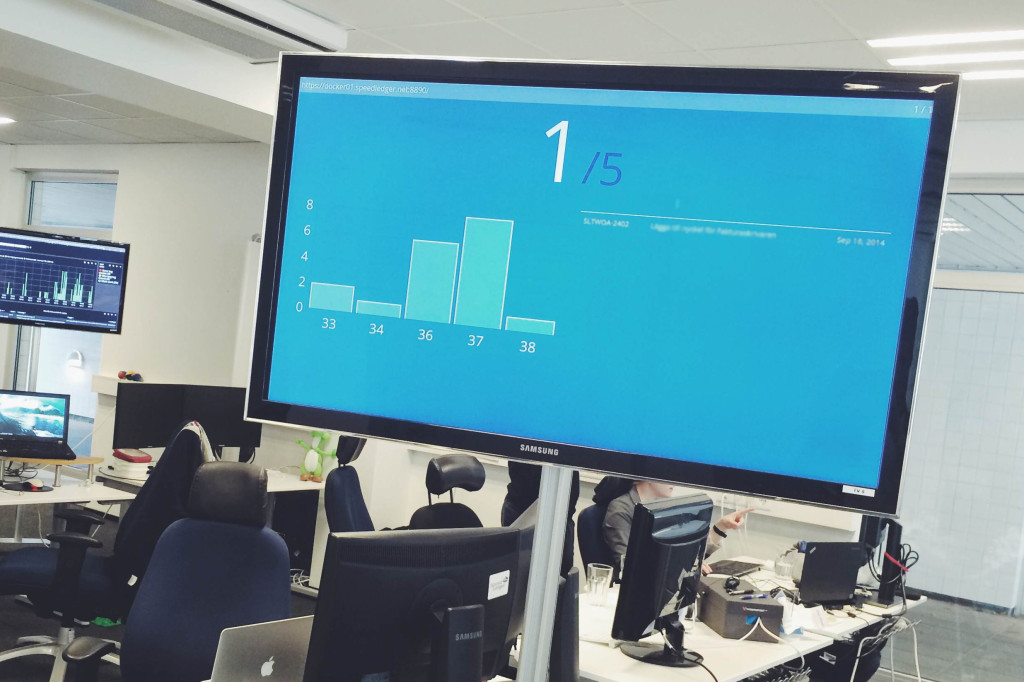A few weeks ago, we started measuring our development performance in a new way. We simply count the number of completed stories (stories with business value only) and track this number over time. We are firm believers in the psychological effect called “You get what you measure”, i.e. when you start to measure some metric and make it very visible, it will converge to the desired value over time. To achieve this effect and to help us focus on the story pace, we have installed monitors in our team room that display our current pace at all times.

One of our team monitors showing the number of stories closed so far the current week (week 38). The number 5 is the current weekly goal.
Just counting the number of stories without using story points or any kind of estimation may seem like a crude strategy, but we think it will have some really nice benefits and we are excited and anxious to evaluate the experiment over time.
A sceptic may react to this strategy by saying: That’s silly, you just have to make less work in each story and you will get a higher score!
This is very true. And also very advantageous! It creates a win-win situation in which we get the story pace metric for tracking purposes, and a mechanism/incentive to decrease the size of our stories. Smaller stories provide a better flow, more frequent feedback, and less waste. (To name just a few benefits)
So, how long can we rely on this mechanism? Well, if we are successful at decreasing the story size continually, the number of stories per unit of time will increase. Eventually, the overhead of switching between stories will become too costly (percentage-wise). To achieve an even higher story pace at this point, we will have to focus on our tools and processes to reduce the overhead. As a result, we go from win-win to win-win-win: By introducing the story pace metric, we get the metric itself, an incentive to create smaller stories, and finally a mechanism that incentivises us to streamline our process and our tools.
This advantageous spiral may – in theory – go on forever. However, some kind of practical equilibrium will probably settle after a few cycles. At this point we will have become experts at slicing our stories into super thin slices and and also at streamlining/automating our process. We will have a nice high throughput of quality work, but we will also have something that may be even more desirable than a high pace: A predictable pace. Our product owners are going to love us! (Even more…)
All of the above is of course only our theory/hypothesis. We are looking forward to the coming months to see if we can pull it off in practice!

Recent Comments